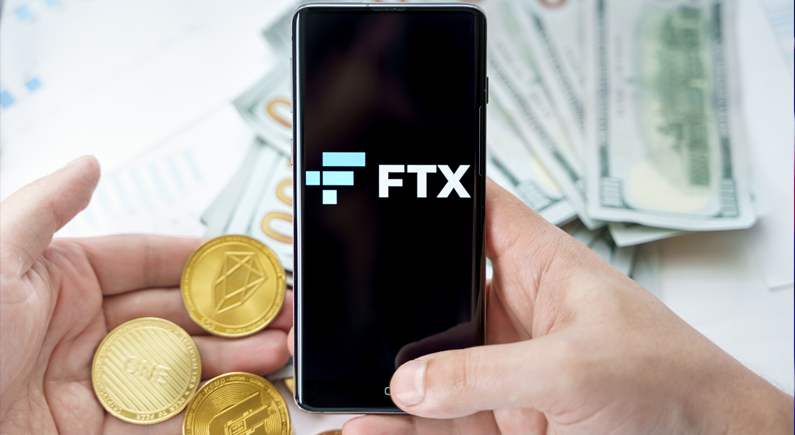Lessons learned from the FTX fallout: the power of self-custody

The FTX implosion is a defining moment in crypto. Of the many consequences that will echo into the future, first principles are certainly making a comeback.
With each passing day, more details of FTX’s mismanagement, ongoing fallout, and curious bankruptcy proceeding emerge. Meanwhile, everyone’s asking “how did we get here?”
It will be a while before the dust settles even as more institutions reveal their financially stressful situation. Legal battles take time. The full scope of this domino effect will likely be years in the making. US bank Silvergate, Gemini exchange and Digital Currency Group and even Binance are all under scrutiny. But one thing’s for sure: self-custody is a zero sum game.
Beyond ‘trusted’ third parties
The fallout is not a death knell for cryptocurrencies, but a setback. The same way Bernie Madoff and the subprime mortgage crash did not end conventional financial markets, crypto trading will continue working as usual. But the difference between those scandals and the FTX fiasco is the role of centralised intermediaries.
In the case of FTX, users had the ability to take control of their assets – an impossible thing to do in traditional finance.
This mere fact speaks volumes about our industry. We’re here to stay and we’re going to disrupt everything. Indeed, cryptocurrency assets provide a unique quality that otherwise does not exist. The tools are all there. For most, self-custody is a permanent basic principle and function of decentralisation. And if anything at all, the FTX saga confirms that there is always risk in trusting third parties.
Unfortunately, it often takes a crisis for tech. pioneers to refocus their efforts on the grass roots technology that got them interested in the first place. The strong pull towards large, centralised players whose existence revolves around assets that are meant to be decentralised is a behavioural contradiction – one that will be increasingly rectified going forward.
But to be fair, the concept of decentralisation and decentralised assets is still very new. For most of our lives, all we’ve known is central authority – banks, brokers, government services – you name it. So it’s only human to gravitate towards this perceived safety.
When it comes to finances, this gravitational pull is no different. The bigger, richer and strong a player, the more we want to stand behind and support them. A consequence of groupthink, safety in numbers fallacy or merely blind trust in one authority, the fact remains that this heuristic model is unlikely to be correct in a world where decentralised technology renders it optional.
Back to the Basics
In a world where the concept of ‘everything as a service’ is the prevailing wind, crypto is swimming in the opposite direction.
When the FTX downfall accelerated on Nov. 6th and the FTT token zoomed towards zero, passions ran high; shock, bafflement, numbness, anger and grief. In such times, the Bitcoin Whitepaper stands as a reminder of first principles. It provides a bedrock for a young industry, filled with builders ready to dutifully implement and rebuild a better and brighter future.
The BTC white paper is a reminder of why it is critical to remain sovereign. Institutions who are on board with the fundamental mission will continue to create critical tools and products to build out infrastructure for individual empowerment. Indeed, Satoshi’s white paper reminds us that exchanges are much like public toilets – you’re there to do your business and not a second more.
If you do not have control of your keys, you don’t have control over your Bitcoin or crypto.
That said, self-custody relies on a proactive approach in taking matters into one’s own hands. As a developed Western society, we’re accustomed to relying on third parties to keep our assets safe. Fractional reserve banks have served this role for decades, as they used to be an easy solution – though admittedly not the best.
With self-custody and cold-storage, there’s an implicit recognition of accountability which scares people – but the fear is unwarranted. There are just as many if not more reasons to be concerned about leaving your crypto on exchanges, especially dodgy ones. For example, there’s a risk of hacks, or worse yet, a rogue exchange being declared insolvent just like FTX. Gemini Earn users are the latest victims of centralised mishaps – some 340,000 users are in a precarious position due to ongoing financing woes with DCG.
Regulated Exchanges versus Self Custody
Almost instantly, entities like Coinbase and Kraken started to tout their regulated custodial capabilities. This is peculiar because Lehman Brothers was completely regulated and it still blew up in spectacular fashion in the great financial crisis of 2008. Regardless, US exchanges are required to segregate assets to ensure that funds are not piled into one account (essentially a slush fund). In truth, you don’t need the law to tell you this standard operating procedure – just basic decency, common sense and no bad intentions.
Still, crypto exchanges have taken steps to mitigate similar scenarios by adopting a proof-of-reserves standard. And while it’s an admirable move towards better auditing, no amount of ‘good behaviour’ can overcome the absolute security offered by self-custody.
“Not your keys, not your bitcoin” is a time-tested mantra for a reason. It’s the one thing that is quickly forgotten when the good times come, and the bedrock that keeps the industry going when the proverbial salad hits the fan.









